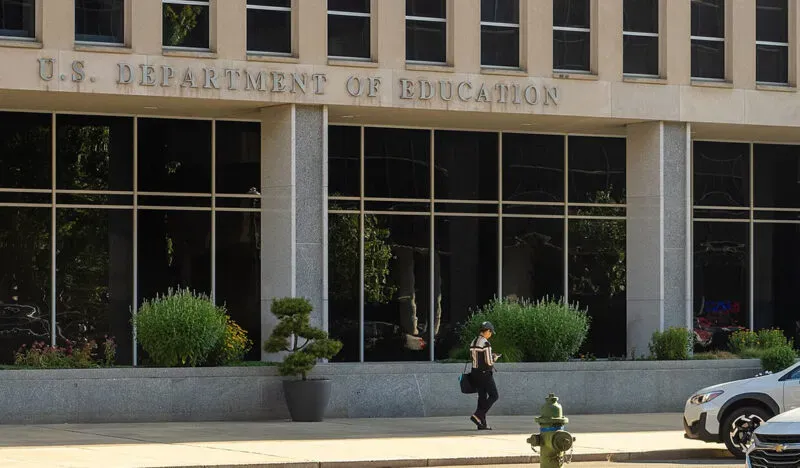By Jonathan Butcher, The Daily Signal | April 10, 2025
Will the U.S. Department of Education end with a bang or a whimper? So far this year, President Donald Trump’s executive orders have arrived with a bang, directing Education Secretary Linda McMahon to take “all necessary steps” to close the agency. The department proceeded to cut overgrown staff rolls and plans to move programs for children with disabilities and management of student loans to other federal offices.
But for Washington to finish the job, maintaining civil rights protections for students and simultaneously disentangling the federal bureaucracy from classrooms, officials will need more than a whimper—they will need legislation.
Trump’s team has already reduced Education Department personnel by half through a reduction in force. The agency had grown to more than 4,000 employees, but no report, no federal audit or independent review, has justified the office having a staff this size.
Research has demonstrated that many Education Department programs are ineffective, including large budget line items such as teacher training and recruitment. And yet the programs have continued, most ballooning in size.
Shifting the Essential Responsibilities
As the White House reduces the federal footprint in education, the Education Department has committed that essential services will continue. The office will disburse federal taxpayer spending for children in low-income areas, while federal officials are discussing how to move spending for children with disabilities to the U.S. Department of Health and Human Services.
The department is also still managing student loans while considering ways to shift these responsibilities to an office better suited for the task, such as the Small Business Administration or the U.S. Treasury.
Yet federal law still directs the Education Department to fulfill certain obligations, which means Congress will need to carefully separate certain roles from the agency and phase out other processes.
Sen. Rounds Introduces Returning Education to the States Act
Sen. Mike Rounds’, R-S.D., introduced legislation Wednesday that returns control over K-12 programs to state and local officials. The Returning Education to the States Act would “eliminate the U.S. Department of Education and redistribute all critical federal programs to other departments,” for example, civil rights enforcement. Such decisions will be crucial because as the Education Department winds down its operations and reduces staff, other agencies will need clear directives on how to carry out the responsibilities.
Rounds’ legislation aligns with many recommendations the Heritage Foundation has proposed, including moving services for Native American students to the Interior Department and shifting federal taxpayer support for children in military families to the Defense Department.
Rounds also proposes to convert Title I of the Elementary and Secondary Education Act—federal taxpayer spending for children in low-income areas—to block grants that will be awarded individually to states. This move would give state officials more authority over how to use the spending—between $500 and $1,300 per student, depending on the levels of poverty in a different areas—to meet the needs of students in their borders.
The Trump administration recently reminded state officials that federal law contains flexible spending provisions that are underutilized. Should state policymakers begin to exercise more authority now, the provisions in Rounds’ proposal would solidify this autonomy.
An Assurance for Parents
Legislation such as Rounds’ should give parents confidence that Members of Congress and the White House are mindful of existing processes. Some families still have legal cases pending with the Education Department’s Office for Civil Rights, for example. Congress should solidify the transfer of this litigation to the U.S. Department of Justice so that oversight and enforcement continues.
Sens. Rand Paul, R-Ky.; Mike Lee, R-Utah; and Bernie Moreno, R-Ohio, also recently introduced a proposal to close the Education Department, simply sunsetting the agency at the end of 2026. As Trump’s executive orders streamline the agency and move services to other offices, this concise proposal may be enough. More importantly, the proposal offers lawmakers still another opportunity to schedule the agency’s closure.
Schools will open tomorrow because the Education Department does not operate any classrooms or shuttle teachers to work each day. Student learning does not depend on Washington. Meanwhile, federal lawmakers can assure parents that the world is not ending with a bang or a whimper—it is just the end of an ineffective federal bureaucracy.
Jonathan Butcher is the Will Skillman fellow in education at The Heritage Foundation and the author of “Splintered: Critical Race Theory and the Progressive War on Truth” (Post Hill Press/Bombardier Books, 2022).
Original article link








